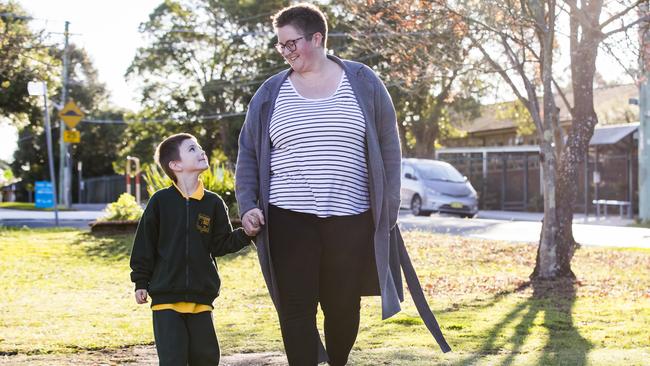Sydney water bills: How much you will pay if dams fall below 80 per cent
The state’s independent pricing regulator says people in NSW can pay less for water but only if they dramatically cut their usage. SEE HOW THIS IMPACTS YOU HERE.
NSW
Don't miss out on the headlines from NSW. Followed categories will be added to My News.
A typical household would need to reduce water use by a quarter during drought to avoid paying more under a new price system recommended by the independent pricing regulator, the Water Minister has told state parliament.
The government was on Tuesday trying to distance itself from the move, as Labor said families who were renting would be the hardest hit.
Under a new system announced by the Independent Pricing and Regulatory Tribunal, residents would pay almost a dollar extra for every 1000 litres of water in times of drought.

MORE NEWS
NSW exporters given $10k state government grant
New probe into execution-style killing of Bandidos boss
No parties, no visitors: How uni life will drastically change
Usage charges would increase to $3.18 per 1000 litres when dams fall below 60 per cent. The regular cost would be $2.35, a 24 cent increase from current prices, with the rise offset by a cut to fixed service charges. Sydneysiders use about 200L per person a day.
While the government said that in the past 10 years dams had been below 60 per cent for “less than two years”, Labor argued that, over the past 20 years, dams have been under IPART’s proposed drought conditions for 10 years.
Data compiled by the Opposition showed that some residents would face a 50 per cent bill increase during drought, with high rental areas in western and southern Sydney worse off.

“The hardest hit will be families with three or more people, and it will be renters,” Opposition water spokesman Clayton Barr said.
Renter Kristen Tomlinson said: “It’s certainly not ideal … we are a single income household with two kids so an increase in anything like that is not good news for anyone.
“With two boys who love playing with water and love baths, it’s hard to keep on top of our water usage. ”

Ms Pavey told Question Time the new price structure was designed for people to save water.
“IPART is sending a very important message that conserving water in times of drought is the appropriate thing for a community to do.” She said while bills could rise by up to 16 per cent “that bill will remain the same, it will stay low, if you reduce water (use) by 26 per cent”.
Premier Gladys Berejiklian said that the price determination came from an independent body.
Under the plan, bills will be offset by a cut to fixed charges for services, which IPART chair Paul Paterson said would drop from over $700 a year to about $580 for typical households.
In previous submissions on the matter a suite of politicians and economists have warned that drought-based pricing would hurt large families who cannot easily regulate their water use.
However Dr Paterson said the decrease in the fixed water services component of bills would ensure water bills can remain “affordable”.
“The drought price provides stronger incentives for customers to conserve water when it is most scarce, without locking in higher prices when dams are full,” Dr Paterson said.
“This decision reflects the increased costs of supplying water in periods of scarcity and provides a stronger reward to households who conserve water in drought.”
He said the prices would allow for a record $4.6 billion in capital expenditure by Sydney Water over the next four years.
IPART decided against a pricing scheme that imposes higher per unit pricing for large water users, with Dr Paterson saying this would penalise larger households.
“Our pricing decisions provide incentives for all customers to conserve water all of the time, while ensuring that customers only pay for the additional costs of drought when necessary”.
